Guofei Jiang
A Dual-Stage Attention-Based Recurrent Neural Network for Time Series Prediction
Aug 14, 2017

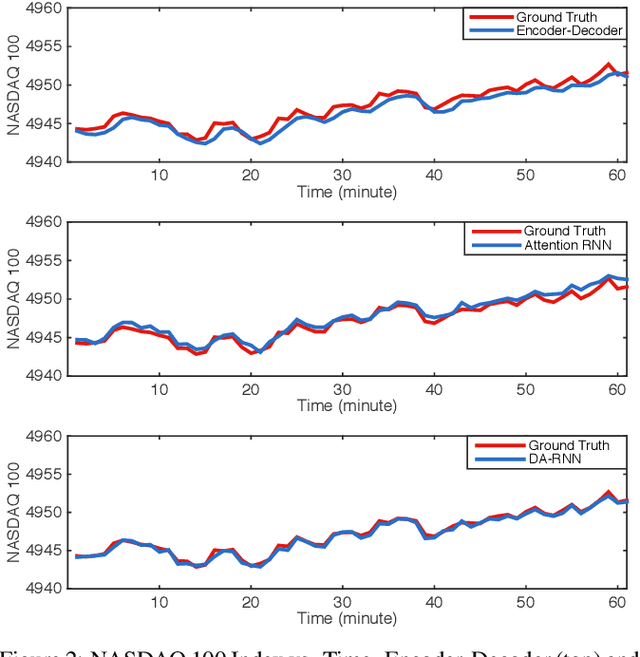
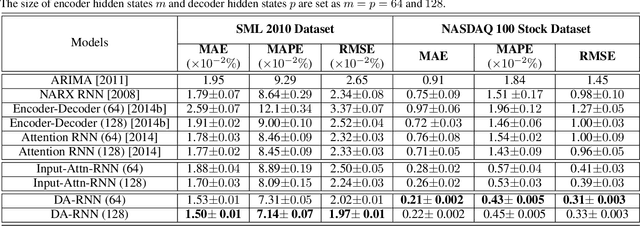
Abstract:The Nonlinear autoregressive exogenous (NARX) model, which predicts the current value of a time series based upon its previous values as well as the current and past values of multiple driving (exogenous) series, has been studied for decades. Despite the fact that various NARX models have been developed, few of them can capture the long-term temporal dependencies appropriately and select the relevant driving series to make predictions. In this paper, we propose a dual-stage attention-based recurrent neural network (DA-RNN) to address these two issues. In the first stage, we introduce an input attention mechanism to adaptively extract relevant driving series (a.k.a., input features) at each time step by referring to the previous encoder hidden state. In the second stage, we use a temporal attention mechanism to select relevant encoder hidden states across all time steps. With this dual-stage attention scheme, our model can not only make predictions effectively, but can also be easily interpreted. Thorough empirical studies based upon the SML 2010 dataset and the NASDAQ 100 Stock dataset demonstrate that the DA-RNN can outperform state-of-the-art methods for time series prediction.
Behavior Query Discovery in System-Generated Temporal Graphs
Nov 19, 2015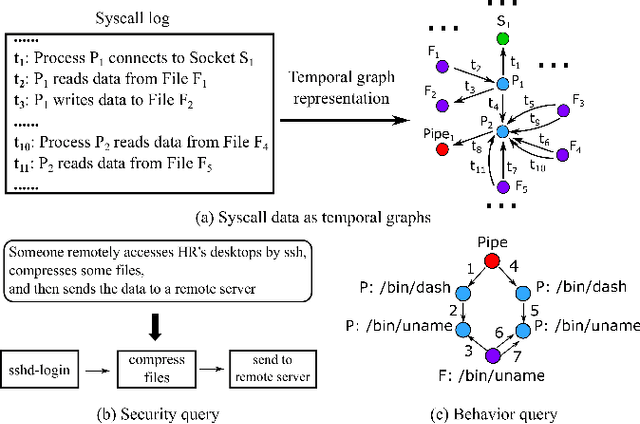
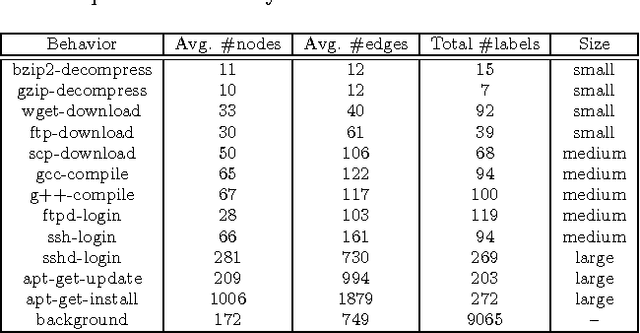

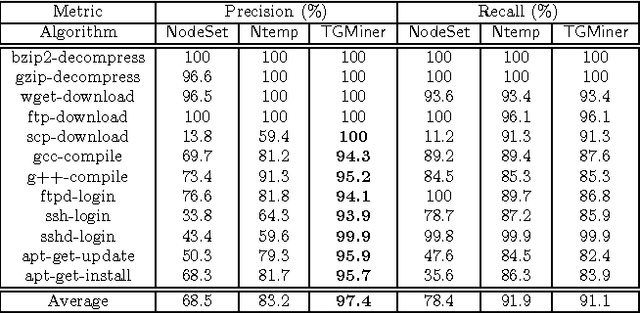
Abstract:Computer system monitoring generates huge amounts of logs that record the interaction of system entities. How to query such data to better understand system behaviors and identify potential system risks and malicious behaviors becomes a challenging task for system administrators due to the dynamics and heterogeneity of the data. System monitoring data are essentially heterogeneous temporal graphs with nodes being system entities and edges being their interactions over time. Given the complexity of such graphs, it becomes time-consuming for system administrators to manually formulate useful queries in order to examine abnormal activities, attacks, and vulnerabilities in computer systems. In this work, we investigate how to query temporal graphs and treat query formulation as a discriminative temporal graph pattern mining problem. We introduce TGMiner to mine discriminative patterns from system logs, and these patterns can be taken as templates for building more complex queries. TGMiner leverages temporal information in graphs to prune graph patterns that share similar growth trend without compromising pattern quality. Experimental results on real system data show that TGMiner is 6-32 times faster than baseline methods. The discovered patterns were verified by system experts; they achieved high precision (97%) and recall (91%).
 Add to Chrome
Add to Chrome Add to Firefox
Add to Firefox Add to Edge
Add to Edge